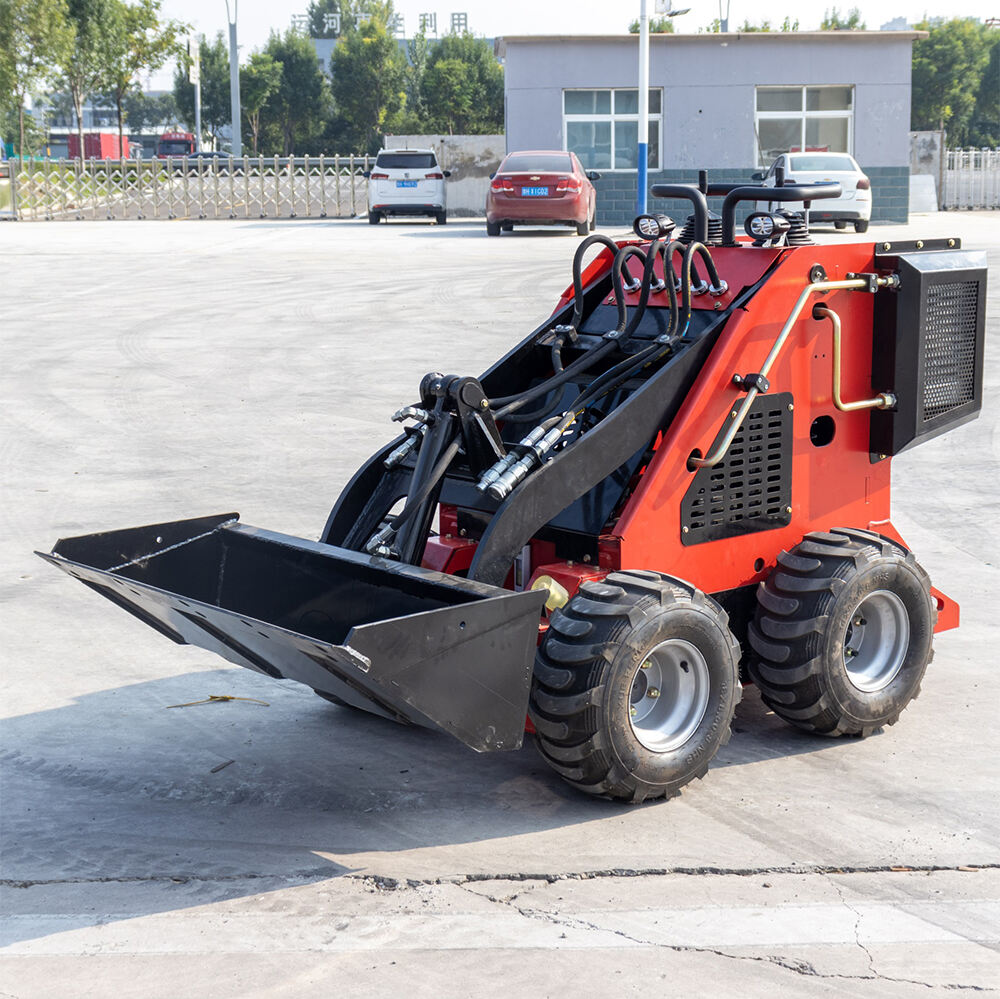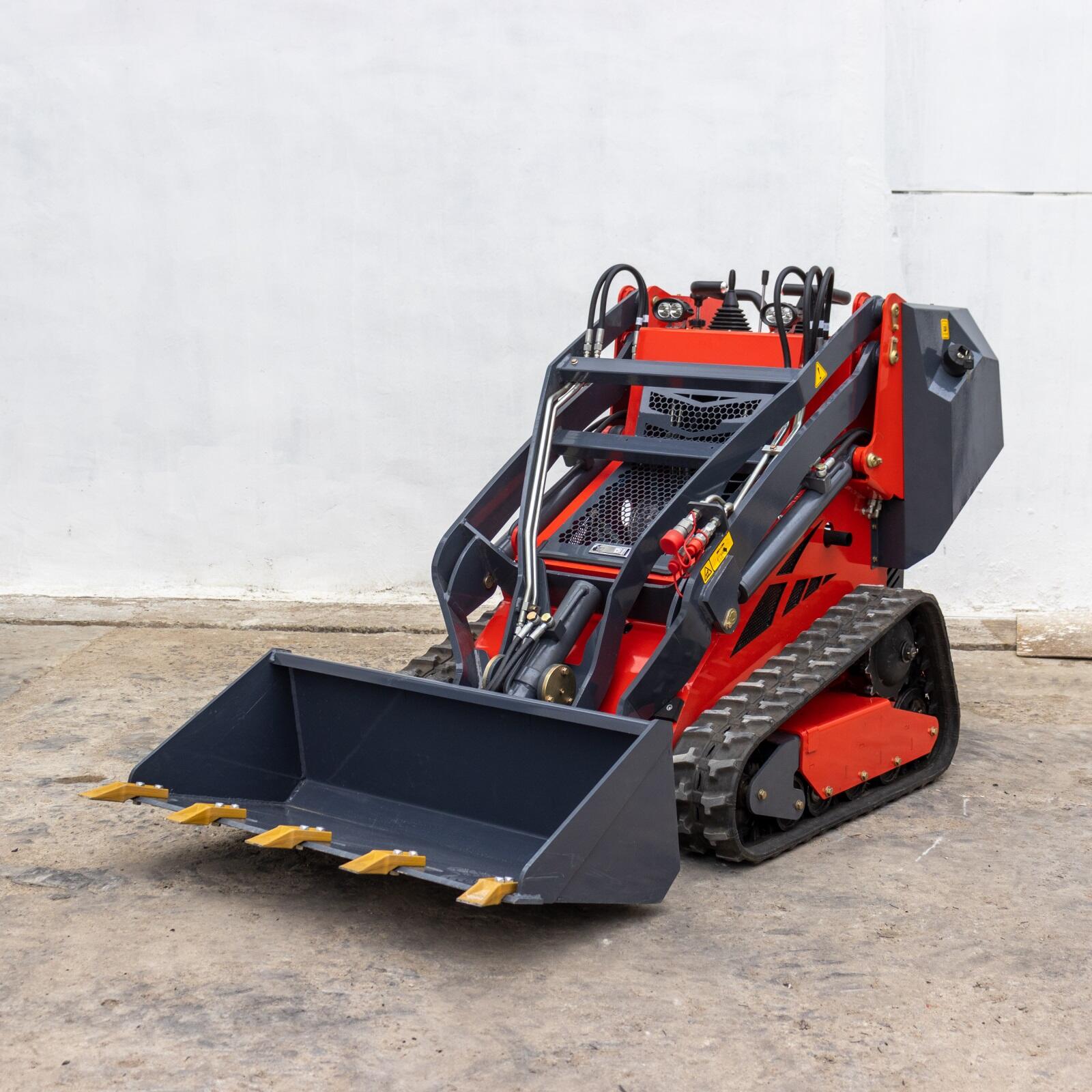Enhance Operations with Versatile Skid Steer Loaders
Key Benefits of Versatile Skid Steer Loaders
Enhanced Maneuverability in Tight Spaces
Skid steer loaders stand out for their compact design, making them perfect for navigating narrow job sites and confined areas. This feature is particularly beneficial in urban construction projects where space is at a premium. Their unique four-wheel steering system allows for complete 360-degree turns, further strengthening their ability to work effectively in tight quarters. Additionally, their small footprint combined with powerful hydraulic systems facilitates quick repositioning and adjustment of attachments, which substantially increases productivity on the job site.
Multi-Attachment Versatility for Diverse Tasks
Skid steer loaders offer multi-attachment versatility, allowing them to be equipped with various tools like buckets, forks, and grapples. This capability enables them to perform a range of tasks, from digging and lifting to grading, effectively reducing the need for numerous machines on-site. Consequently, operations become streamlined, leading to cost savings as multiple tasks can be achieved with one piece of equipment. The ease of switching between attachments also results in significant time savings, ensuring that projects adhere to schedules and budgets.
Fuel Efficiency and Cost-Effective Operation
Modern skid steer loaders are designed with fuel-efficient engines, significantly reducing operating costs while delivering powerful performance. Research indicates that using fuel-efficient machinery can save companies significant sums, especially in high-usage scenarios. Moreover, when combined with the reduced maintenance costs from having fewer moving parts compared to larger machinery, skid steer loaders become a valuable investment for businesses in construction and agriculture sectors.
Operator Comfort and Safety Features
The latest skid steer models are designed with operator comfort and safety in mind. They come equipped with ergonomic seating, adjustable armrests, and climate control, enhancing comfort during prolonged working hours. Safety is paramount, with features such as Roll Over Protective Structure (ROPS) and improved visibility ensuring that operators are safeguarded and aware of their surroundings. Additionally, user-friendly controls and intuitive designs ease the learning process for new operators, making training faster and more efficient.
Top Applications for Skid Steer Loaders in Construction and Agriculture
Excavation and Material Handling on Urban Job Sites
Skid steer loaders excel in urban construction, where space is often limited. Their compact design and agility make them ideal for navigating tight spaces, such as urban job sites. This allows them to efficiently perform excavation and material handling tasks that larger equipment may struggle with. Skid steers can easily load and transport materials, such as dirt and debris, to and from constricted work areas, ensuring that projects can progress smoothly without delays. Additionally, with the capability to use various attachments like buckets and augers, skid steer loaders adapt to diverse excavation needs, from foundation digging to trenching, providing valuable versatility on site.
Landscaping and Snow Removal Capabilities
The compact size and versatility of skid steer loaders make them perfectly suited for landscaping tasks, including grading, sod installation, and clearing debris. In regions with heavy snowfall, these machines become indispensable for quick snow removal, whether they are equipped with plows or blowers to clear driveways and roads. The ability to switch between landscaping and snow management tasks using various attachments like grapples and blades enhances efficiency, allowing operators to handle projects that would otherwise require multiple machines. This versatility not only saves time but also reduces operational costs, making skid steer loaders an essential tool for landscaping and snow management.
Agricultural Uses: From Barns to Field Maintenance
In the agricultural sector, skid steer loaders are invaluable for a wide array of tasks, ranging from feeding livestock to maintaining fields. Their adaptability with attachments like forks and bales spears helps farmers lift and manage heavy materials with ease, thereby increasing overall operational efficiency. Whether it's navigating the confines of a barn or traversing open fields, skid steers' compact design ensures easy maneuverability. Their usability in varied agricultural settings—from carrying feed and clearing manure to grading land and maintaining roads—highlights their importance, offering a one-stop solution for diverse farm needs and activities.
Product Highlights: High-Performance Skid Steer Models
HT320 Skid Steer Loader: Compact Power for Confined Spaces
The HT320 Skid Steer Loader is expertly crafted for maneuverability in confined spaces, combining powerful lifting capabilities with a compact design. This model maximizes efficiency on job sites, allowing for seamless operation even in challenging environments. Thanks to its advanced hydraulic system, the HT320 can easily switch between attachments, making it versatile for construction and landscaping tasks alike. Users consistently report enhanced productivity when employing the HT320, as it accomplishes jobs typically reserved for larger machinery.
HT360W Skid Steer Loader: All-Terrain Efficiency
Engineered for versatility, the HT360W Skid Steer Loader stands out with its exceptional all-terrain capabilities, making it a prime choice for both construction and agricultural applications. This model boasts enhanced stability and traction, enabling it to manage uneven surfaces with ease, which is crucial for efficiently transferring loads. With its quick-attachment system, the HT360W becomes indispensable for projects ranging from heavy lifting to roadside maintenance, providing a comprehensive solution with unmatched versatility.
HT450 Track Loader: Heavy-Duty Hydraulic Performance
For those in need of a robust machine, the HT450 Track Loader offers outstanding hydraulic performance tailored for demanding tasks. This model is equipped to handle significant weights, boasting the ability to perform extreme lifting for heavy construction projects. Its rugged construction is designed to endure harsh environments, ensuring both reliability and efficiency in challenging conditions. The HT450 is a steadfast choice for operators needing a loader that combines durability with exceptional lifting power.
Maintenance Tips for Maximizing Skid Steer Longevity
Routine Fluid Checks and Filter Replacements
Regular fluid checks and filter replacements are essential for ensuring the longevity and efficiency of skid steer loaders. Checking engine oil and hydraulic fluid consistently helps maintain optimal performance, avoiding the risk of unexpected breakdowns. It's recommended to schedule filter replacements every 200 to 300 operating hours to prevent contamination and maintain the machine’s efficiency. Failing to manage these routine tasks can lead to costly repairs and reduce the equipment's lifespan, highlighting their importance in a maintenance plan.
Hydraulic System Care for Attachment Compatibility
Proper care of the hydraulic system is crucial to ensure that skid steer loaders remain versatile and functional with various attachments. Regular inspections can prevent leaks and maintain overall system efficiency, which is vital for smoothly switching between different mini skid steer attachments. Essential maintenance includes checking hoses, tightening fittings, and changing hydraulic fluid as per the manufacturer's specifications. By maintaining optimal hydraulic performance, operators can improve workflow efficiency, thus enhancing the benefits of versatile skid steer loaders in a range of applications.
Preventing Wear on Tracks or Tires
Vigilant inspection of tracks or tires is critical to detect wear early, allowing for timely rotations or replacements that prevent further damage. Keeping your skid steer clean from debris not only enhances its aesthetic appeal but also prolongs the life of its tires or tracks and improves traction. Routine maintenance should include proper alignment checks to ensure even wear, which can significantly prevent the cost of replacements. Ensuring these checks are a part of regular maintenance routines helps in effectively extending the lifespan and utility of the machinery.



